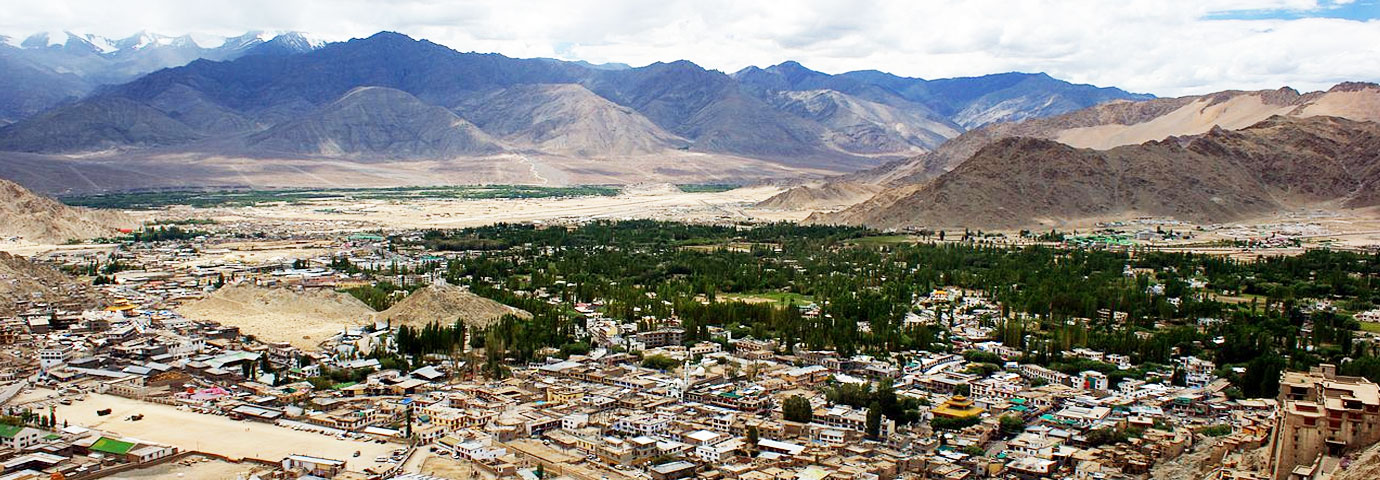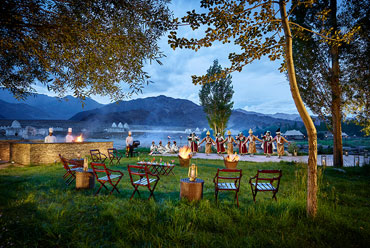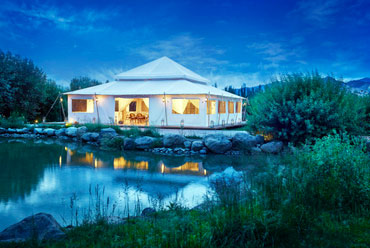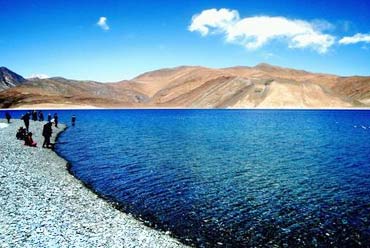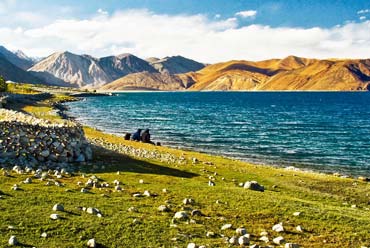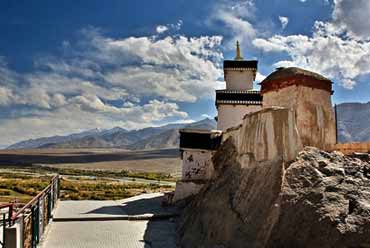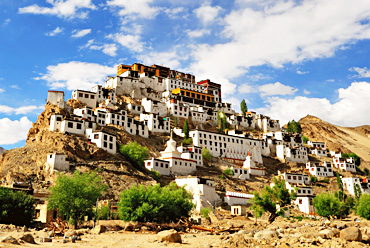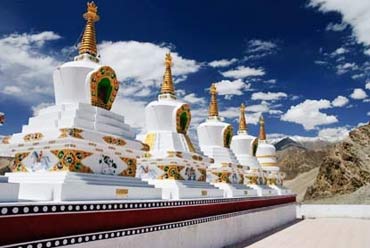Tourist Attractions in Nubra Valley
Diskit is the administrative center of the Nubra Valley. It is nestled on the edge of a desert on the Shyok-side valley, eight hours away, on the other side of the Khardong La (La means Pass). To reach this place one should carry along plenty of water, because the increase in height by over 2000 meters, can give anybody severe headache and nausea. The road is paved till south Pulu, a military check post, where the permits are checked and the details entered. This is an unforgettable excursion that makes Indiana Jones look like a kindergarten excursion.
Surrounded by the majestic Himalayas, the distinct smell of smoky kitchens, goats, chang (local brew) and butter tea and the fatal edge of the 100-meter sheer cliffs always closer than one really appreciates. One can spot various modes of transportation hundred meters below, at their final resting place.
Surrounded by the rising mountains of the Himalayas and superb views down the Leh valley, the thrill is replaced by a feeling of utmost beauty. Snow lingers all year round on the mountains with prayer-flag topped peaks. A literally breathtaking experience indeed.
Descending into the valley, only the first few km are tricky. Soon, following a mellow stream, one would come into a surprisingly green landscape with rugged stone formations rising up into the sky with the peaks in the background. They look like they have been poured over with sugar. A real fairy tale landscape. As drastically as the landscape had changed from 'moon-land' on top of the Khardong La to a green oasis, one would enter a desert, easily comparable to the Thar in Rajasthan.
Diskit seems like a ghost town, an oasis of tranquility. An enjoyable day's walk brings one to Somoor, half way to Panamik. Army trucks are the only means of transportation in the valley.
A Ladakhi meal is served sitting around the massive black stove in the kitchen, the most important room in any Ladakhi house. It is the place to warm up on a freezing winter night, the place where the family meets, the homework is done and the prayers are said.
Tiger is only another three km towards Panamik. It makes an easy afternoon stroll, inhaling the beauty and the calmness of the impressive, stimulating countryside. Coming across a local, one can be sure to be greeted with a warm smile and a joyful Julee.
The furthest place the permit allows one to visit in the valley is Panamik, the last settlement of any size before the Tibetan border. It's not very wise to proceed further than the provided barrier at the northern edge of the town since this is a rather sensitive border area. It is completely controlled by the Indian Army, usually with very friendly soldiers.
The 250 years old Ensa Gompa, nestled on top of a rock overlooking snow-peaked mountains across the valley is much further away than it looks. It takes at least a six-hour walk to reach, which involves crossing the river at Hargam. The hot springs on the outskirts of Panamik invite one for a literally sizzling bath experience, which will most probably be the first contact with hot water since one leaves Leh.
The Nubra Valley is one of the last treasures of our planet, living in sheer isolation for most of the year in the heart of the great Himalayas. A real Shangri La, with no 'Baywatch', no mobile phones and no Ray Ban sunglasses.
Places to Visit in Nubra Valley
On your stay in Nubra Valley, don’t forget to visit these attractions -
-
Diskit Monastery
-
Maitreya Buddha
-
Samstanling Gompa, Sumur
-
Yarab Tso Lake
-
Turtuk Village
-
Panamik Village
Things to do in Nubra Valley
Here are the famous things to do in Nubra Valley to make your stay more exciting -
-
Camel Safari at Hunder Sand Dunes
-
Quad Biking at Hunder Sand Dunes
-
Camping

